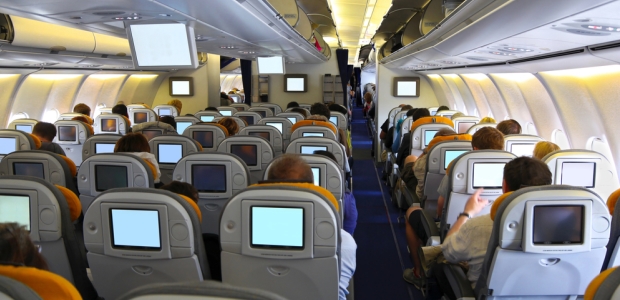
FAA Okays Expanded Electronics Use In Flight
Passengers eventually will be allowed to read e-books, play games, and watch videos on their devices during all phases of flight except takeoff and landing, but cell phone calls are still prohibited because of FCC regulations.
Federal Aviation Administration Administrator Michael Huerta announced Oct. 31 that the agency has determined airlines can safely expand passengers’ use of portable electronic devices, and the agency is giving the airlines implementation guidance. This decision had been expected, but the agency cautioned that current PED policies "remain in effect until an airline completes a safety assessment, gets FAA approval, and changes its PED policy."
Cell phone calls won't be allowed because FCC regulations prohibit airborne calls using cell phones. Passengers will be allowed to read e-books, play games, and watch videos on their devices during all phases of flight except takeoff and landing, however.
"Due to differences among fleets and operations, the implementation will vary among airlines, but the agency expects many carriers will prove to the FAA that their planes allow passengers to safely use their devices in airplane mode, gate-to-gate, by the end of the year," the agency's news release stated.
"We believe today's decision honors both our commitment to safety and consumers' increasing desire to use their electronic devices during all phases of their flights," said Transportation Secretary Anthony Foxx. "These guidelines reflect input from passengers, pilots, manufacturers, and flight attendants, and I look forward to seeing airlines implement these much-anticipated guidelines in the near future."
"I commend the dedication and excellent work of all the experts who spent the past year working together to give us a solid report so we can now move forward with a safety-based decision on when passengers can use PEDs on airplanes," Huerta said.
FAA's release included this top 10 list of things passengers should know about expanded use of PEDs aboard aircraft:
- Make safety your first priority.
- Changes to PED policies will not happen immediately and will vary by airline. Check with your airline to see if and when you can use your PED.
- Current PED policies remain in effect until an airline completes a safety assessment, gets FAA approval, and changes its PED policy.
- Cell phones may not be used for voice communications.
- Devices must be used in airplane mode or with the cellular connection disabled. You may use the WiFi connection on your device if the plane has an installed WiFi system and the airline allows its use. You can also continue to use short-range Bluetooth accessories, like wireless keyboards.
- Properly stow heavier devices under seats or in the overhead bins during takeoff and landing. These items could impede evacuation of an aircraft or may injure you or someone else in the event of turbulence or an accident.
- During the safety briefing, put down electronic devices, books, and newspapers and listen to the crew members' instructions.
- It only takes a few minutes to secure items according to the crew's instructions during takeoff and landing.
- In some instances of low visibility – about one percent of flights – some landing systems may not be proved PED tolerant, so you may be asked to turn off your device.
- Always follow crew instructions and immediately turn off your device if asked.